News bias plays a crucial role in shaping public perceptions of media credibility, often leading to diminished trust among audiences. When news outlets are perceived as favoring particular viewpoints, individuals become skeptical of the information presented, which can hinder their ability to make informed decisions. Understanding the various types of news bias is essential for consumers seeking to evaluate the reliability of their news sources.
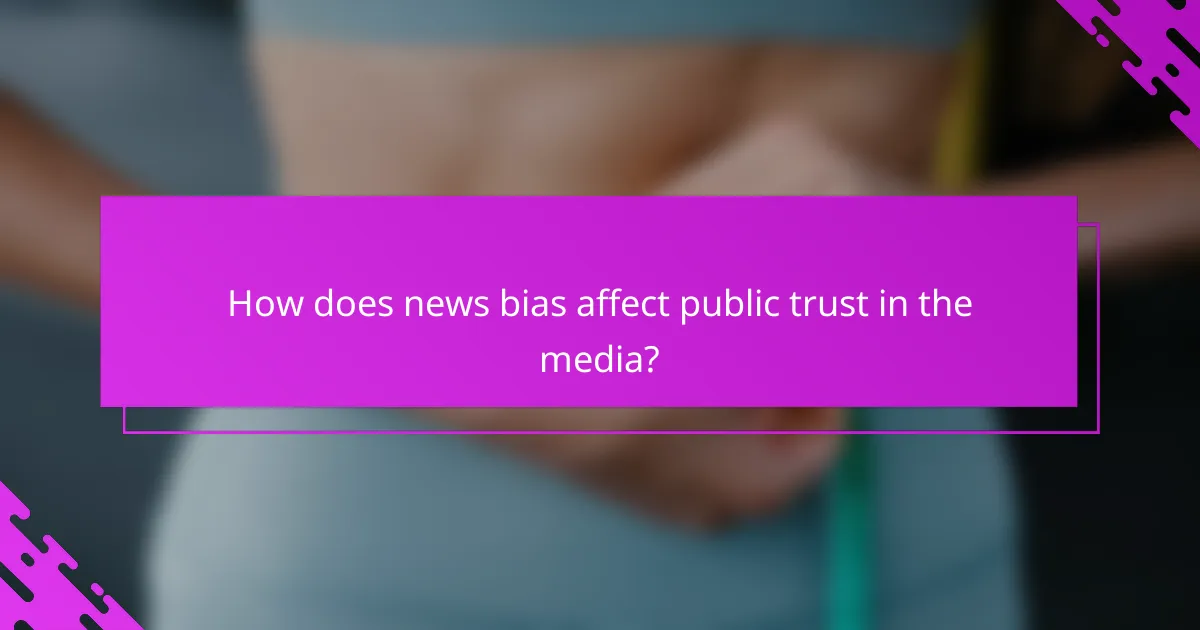
How does news bias affect public trust in the media?
News bias significantly undermines public trust in the media by creating perceptions of partiality and manipulation. When audiences believe that news outlets favor specific viewpoints, they are less likely to rely on them for accurate information.
Decreased trust in news sources
As news bias becomes apparent, trust in various news sources diminishes. Audiences may turn to alternative platforms, including social media or independent blogs, which can lead to further fragmentation of information sources. This shift often results in a reliance on less credible outlets, exacerbating misinformation.
Surveys indicate that many individuals now view mainstream media with skepticism, often citing perceived bias as a primary reason. This erosion of trust can lead to a vicious cycle where news organizations feel pressured to cater to specific audiences rather than uphold journalistic integrity.
Increased polarization among audiences
News bias contributes to heightened polarization, as individuals gravitate towards outlets that reinforce their existing beliefs. This selective exposure can create echo chambers, where opposing viewpoints are dismissed or ridiculed, further entrenching divisions within society.
As audiences become more polarized, discussions around important issues often devolve into confrontations rather than constructive dialogue. This polarization can hinder consensus-building and complicate efforts to address societal challenges effectively.
Impact on information credibility
The presence of news bias can severely impact the perceived credibility of information presented to the public. When audiences suspect bias, they may question the accuracy of the content, leading to a general distrust of news reporting.
To navigate this landscape, consumers should critically evaluate news sources, seeking out diverse perspectives and verifying information through multiple outlets. Engaging with a variety of viewpoints can help mitigate the effects of bias and enhance overall media literacy.

What are the types of news bias?
News bias can be categorized into several types, each affecting how information is presented and perceived. Understanding these biases helps consumers critically evaluate news sources and their credibility.
Partisan bias
Partisan bias occurs when news coverage favors one political party or ideology over others. This can manifest in the selection of stories, language used, and the framing of issues, leading to skewed perceptions among the audience. For example, a news outlet may emphasize negative aspects of a political figure from one party while downplaying similar issues for another party.
To identify partisan bias, consider the source’s ownership and editorial stance. Checking multiple outlets can provide a more balanced view of the same event, allowing for a clearer understanding of the facts.
Selection bias
Selection bias happens when certain stories or viewpoints are chosen over others, influencing public perception by omitting critical information. This can occur in reporting on social issues, where only specific incidents are highlighted, creating a distorted narrative. For instance, focusing solely on violent crime in a community can lead to an exaggerated sense of danger.
To mitigate the effects of selection bias, seek out diverse news sources that cover a wide range of perspectives and topics. This approach helps ensure a more comprehensive understanding of complex issues.
Confirmation bias
Confirmation bias refers to the tendency of individuals to favor information that confirms their pre-existing beliefs while disregarding contradictory evidence. In news consumption, this can lead to a preference for outlets that align with one’s views, reinforcing biases rather than challenging them. For example, a person who believes in a particular conspiracy theory may only engage with sources that support that theory.
To counteract confirmation bias, actively seek out information that challenges your viewpoints. Engaging with a variety of perspectives can foster critical thinking and a more nuanced understanding of news events.
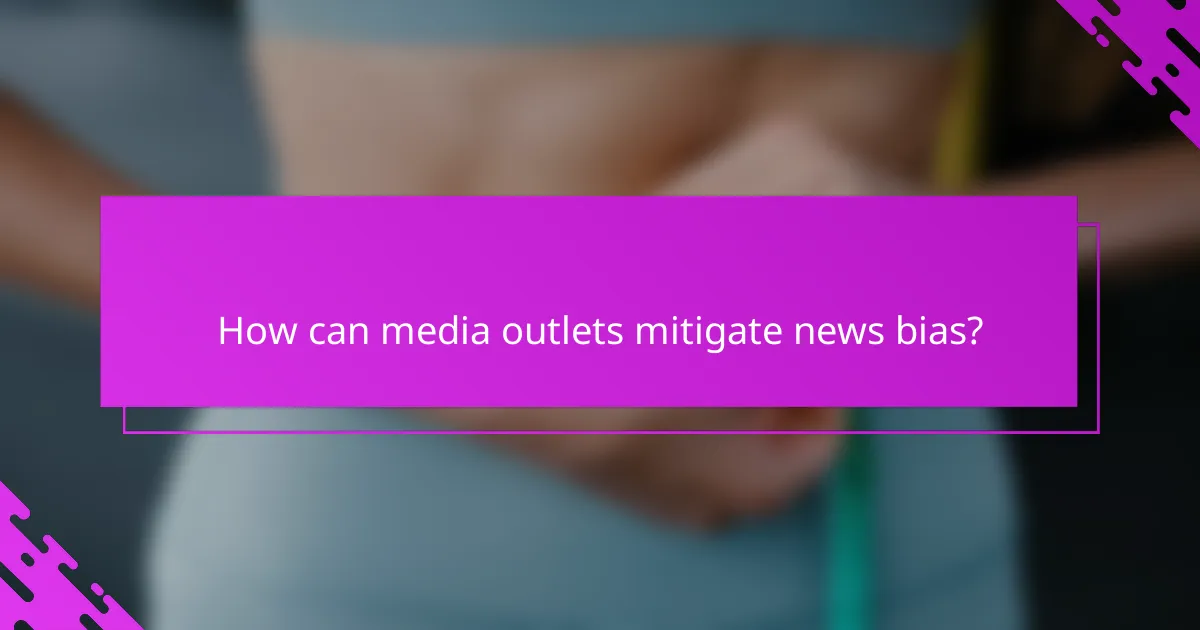
How can media outlets mitigate news bias?
Media outlets can mitigate news bias by implementing structured processes that prioritize accuracy, inclusivity, and transparency. By focusing on these areas, they can enhance public trust and improve their overall credibility.
Implementing fact-checking processes
Fact-checking processes are essential for verifying the accuracy of information before publication. Media outlets should establish dedicated teams or partnerships with independent fact-checking organizations to assess claims made in their reporting.
Regular audits of published content can help identify patterns of bias and misinformation. Outlets can also provide readers with sources and evidence backing their claims, fostering a culture of accountability.
Encouraging diverse viewpoints
Encouraging diverse viewpoints involves actively seeking out and including voices from various backgrounds and perspectives. This can be achieved by featuring guest contributors or conducting interviews with individuals from different communities.
By presenting a range of opinions, media outlets can offer a more balanced narrative, which helps to counteract bias. It’s important to ensure that all viewpoints are treated with respect and given equal weight in discussions.
Transparency in reporting
Transparency in reporting means openly sharing the methods and sources used in news production. Media outlets should disclose potential conflicts of interest and the criteria for selecting stories, which builds trust with the audience.
Providing clear explanations of editorial decisions and the context behind stories can help readers understand the reporting process. Outlets can also invite feedback from their audience to foster a dialogue and improve their practices.
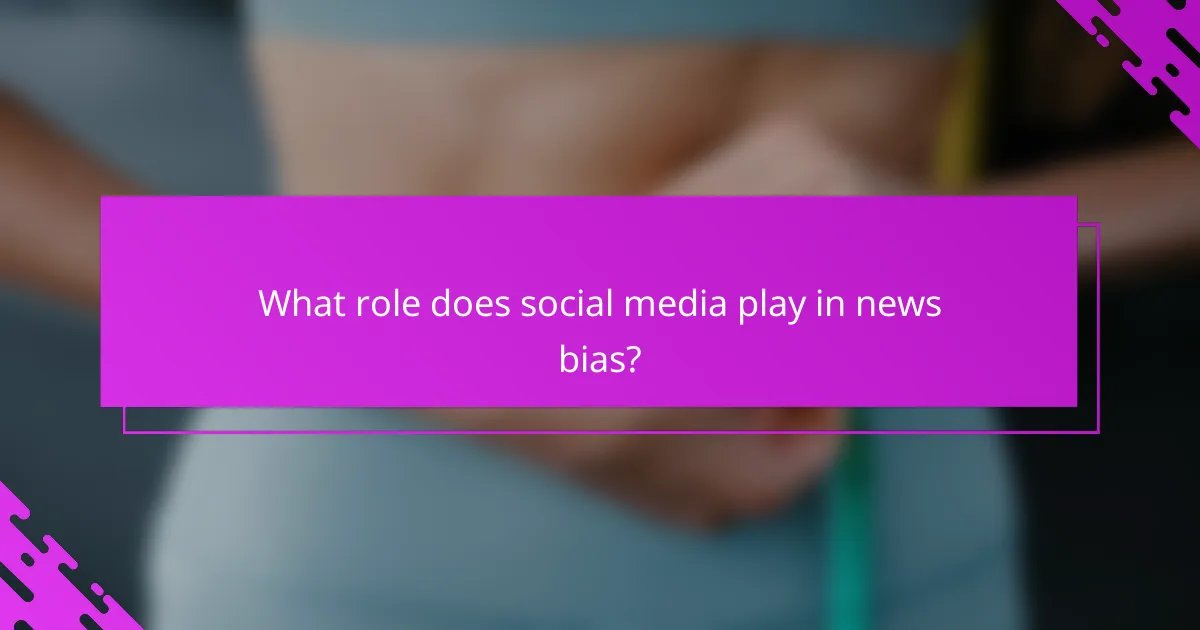
What role does social media play in news bias?
Social media significantly influences news bias by shaping the way information is shared and consumed. It allows for rapid dissemination of content, often prioritizing sensationalism over accuracy, which can distort public perception and trust in media.
Amplification of biased narratives
Social media platforms often amplify biased narratives by promoting content that aligns with users’ existing beliefs. Algorithms prioritize engagement, leading to the spread of sensational or emotionally charged stories, which can overshadow more balanced reporting.
This amplification can create a skewed understanding of events, as users are more likely to encounter information that reinforces their views rather than challenges them. For instance, a politically charged post may receive more shares and likes, further entrenching its bias in public discourse.
Echo chambers and filter bubbles
Echo chambers and filter bubbles are phenomena where users are exposed primarily to information that reflects their own opinions, limiting exposure to diverse perspectives. This occurs as social media algorithms curate content based on user interactions, often isolating them from opposing viewpoints.
As a result, individuals may become more polarized in their beliefs, reducing overall media credibility. To combat this, users should actively seek out varied sources of information and engage with different viewpoints to break out of these bubbles.
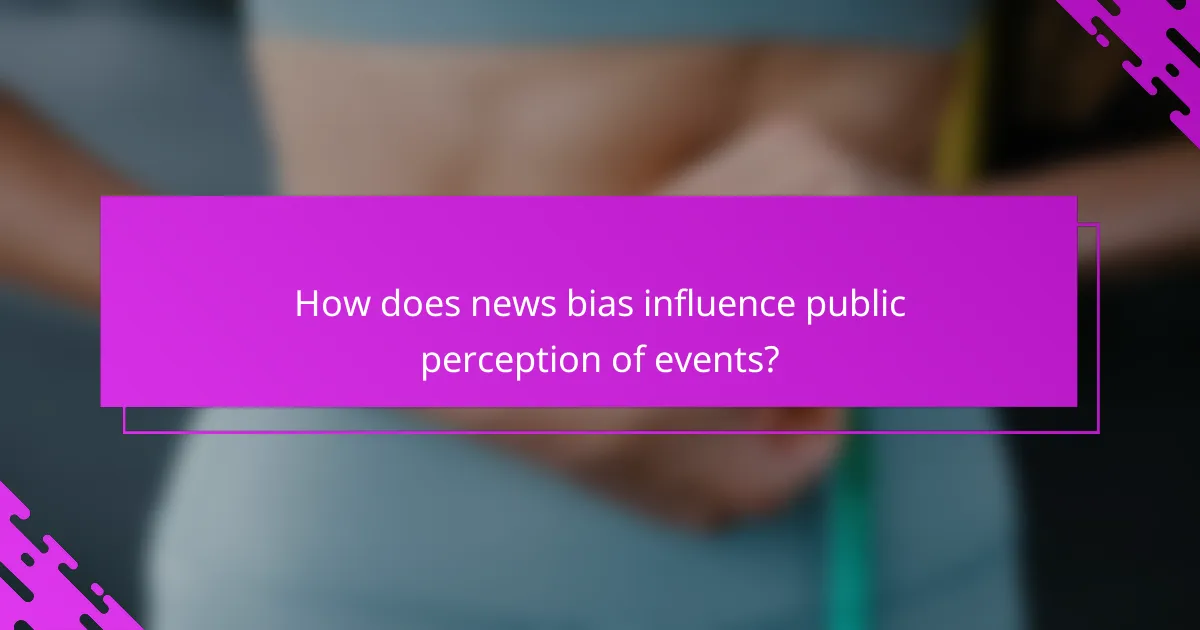
How does news bias influence public perception of events?
News bias significantly shapes how the public perceives events by framing information in a way that aligns with specific viewpoints. This bias can lead to distorted interpretations, affecting trust in media and influencing public opinion on critical issues.
Shaping narratives around key issues
News bias plays a crucial role in shaping narratives by selecting which stories to highlight and how to present them. For instance, a news outlet may emphasize certain aspects of a political event while downplaying others, leading audiences to form opinions based on incomplete information.
Consider how different media outlets report on climate change. Some may focus on scientific consensus and urgent action, while others might highlight dissenting opinions, creating contrasting narratives that influence public understanding and urgency regarding environmental issues.
Framing effects on audience interpretation
The way news is framed can significantly affect audience interpretation and emotional response. For example, framing a protest as a “riot” versus a “demonstration” can evoke different reactions and perceptions of legitimacy among viewers.
Additionally, the use of language and imagery in reporting can lead to biased interpretations. Terms like “freedom fighters” versus “terrorists” can polarize public opinion and shape attitudes toward specific groups or events, highlighting the power of framing in media narratives.
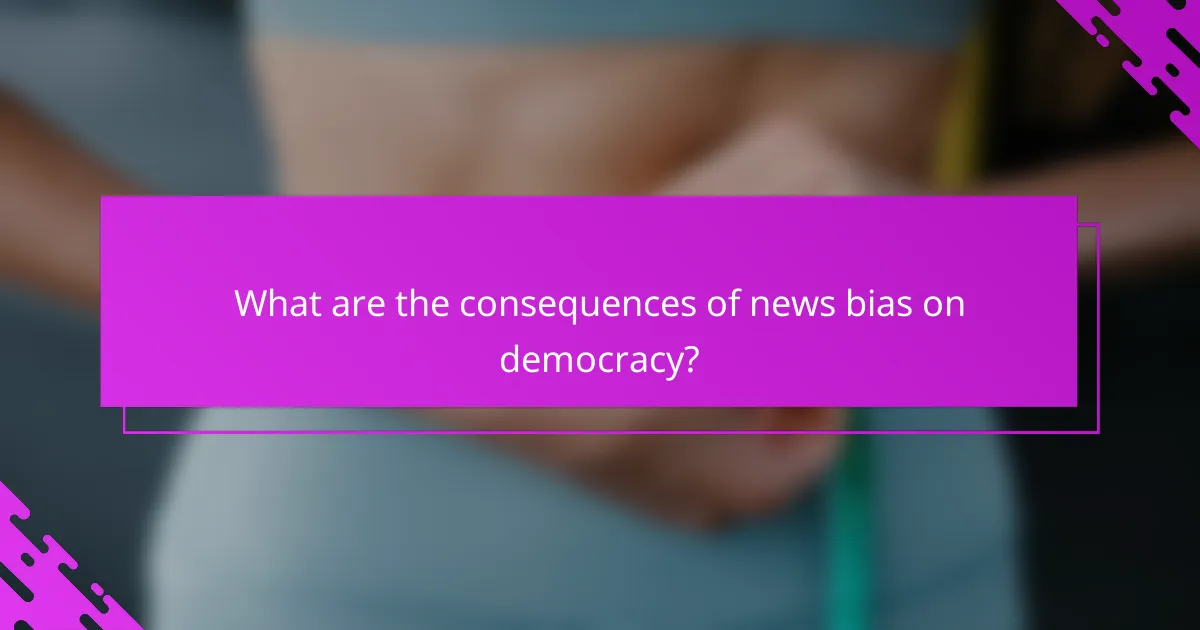
What are the consequences of news bias on democracy?
News bias can significantly erode public trust in media and undermine the democratic process. When news outlets present information with a slant, it can distort public perception and lead to misinformed citizens, ultimately affecting their participation in democracy.
Voter misinformation
Voter misinformation arises when biased news sources present distorted facts or opinions, leading citizens to form incorrect beliefs about candidates or policies. This can result in voters making decisions based on incomplete or misleading information, which can skew election outcomes.
For example, if a media outlet consistently portrays a candidate negatively without providing balanced coverage, voters may be misled about that candidate’s qualifications or policies. This misinformation can spread rapidly, especially on social media platforms, compounding the issue.
Undermining informed decision-making
News bias undermines informed decision-making by limiting access to diverse viewpoints and factual reporting. When individuals are exposed only to one perspective, they may lack the necessary context to evaluate issues critically.
To combat this, consumers should seek out multiple news sources with varying viewpoints to gain a more comprehensive understanding of political matters. Engaging with fact-checking organizations can also help verify claims made in biased reports, ensuring that voters are making decisions based on accurate information.

How can consumers identify news bias?
Consumers can identify news bias by critically analyzing the sources of information and the language used in reporting. Recognizing these elements helps individuals discern the objectivity of news articles and their potential influence on public perception.
Evaluating source credibility
To evaluate source credibility, consider the reputation of the news outlet, the qualifications of the journalists, and the presence of editorial standards. Established organizations with a history of accurate reporting are generally more reliable than lesser-known sources.
Check for transparency in reporting, such as citing sources and providing evidence for claims. A credible source will often have a clear mission statement and adhere to journalistic ethics, which can be found on their websites.
Recognizing emotional language
Emotional language can indicate bias in news reporting. Words that evoke strong feelings or opinions may suggest the article is trying to sway readers rather than inform them. Look for loaded terms that may exaggerate or sensationalize facts.
To assess emotional language, consider the tone of the article. Neutral reporting typically uses straightforward language, while biased articles might employ dramatic phrases or rhetorical questions. Be cautious of headlines designed to provoke an emotional response rather than convey information.


